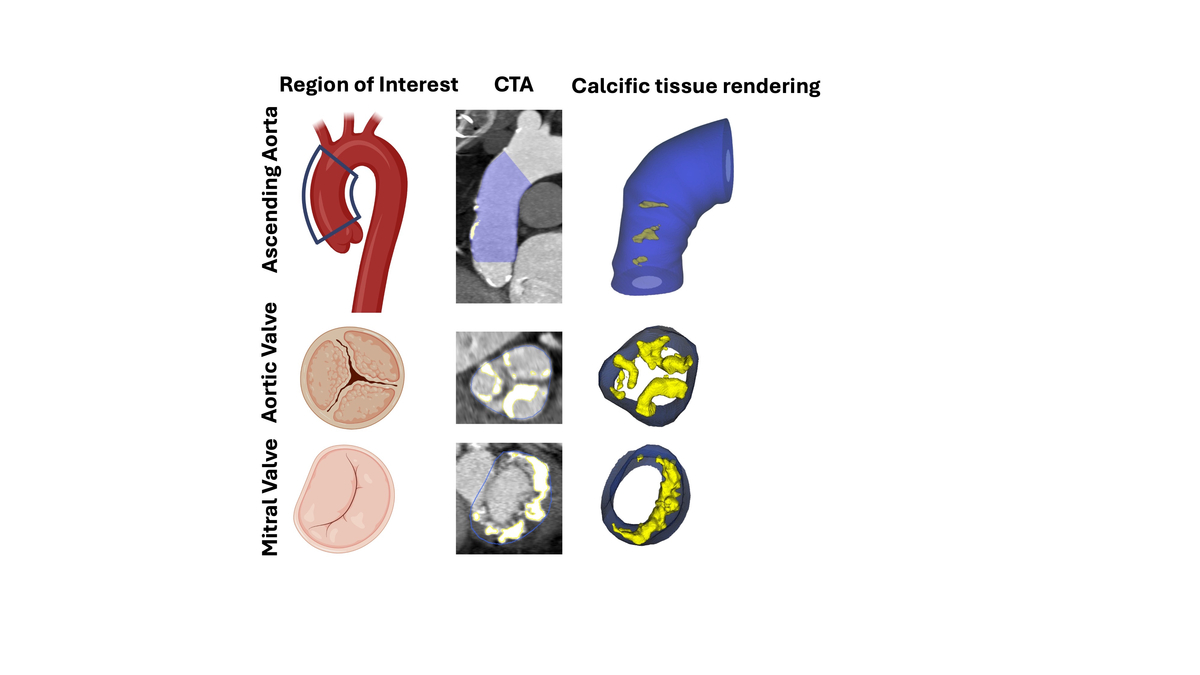Current issue
Archive
Manuscripts accepted
About the Journal
Editorial office
Editorial board
Section Editors
Abstracting and indexing
Subscription
Contact
Ethical standards and procedures
Most read articles
Instructions for authors
Article Processing Charge (APC)
Regulations of paying article processing charge (APC)
RADIOLOGY / RESEARCH PAPER
Interplay between parathyroid hormone concentration and valvular and aortic calcifications
1
Department of Cardiac Surgery and Transplantology, Poznan University of Medical Sciences, Poland
2
2. First Department of Cardiology, Medical University of Warsaw, Poland
3
Department of Radiology, Poznań University of Medical Sciences, Poland
4
Thoracic Research Centre, Collegium Medicum Nicolaus Copernicus University, Innovative Medical Forum, 85-094 Bydgoszcz, Poland, Poland
5
First Department of Cardiology, Poznan University of Medical Sciences, Poznan, Poland., Poland
6
Institute of Heart Diseases, Wroclaw Medical University, Wroclaw, Poland, Poland
7
Department of Biomedical Sciences, and Department of Medicine, Cedars-Sinai Medical Center, Biomedical Imaging Research Institute, Los Angeles, CA, USA, United States
These authors had equal contribution to this work
Submission date: 2024-11-18
Final revision date: 2025-02-04
Acceptance date: 2025-03-28
Online publication date: 2025-06-08
Corresponding author
Anna Olasińska-Wiśniewska
Department of Cardiac Surgery and Transplantology, Poznan University of Medical Sciences, Poznan, Poland
Department of Cardiac Surgery and Transplantology, Poznan University of Medical Sciences, Poznan, Poland
KEYWORDS
TOPICS
ABSTRACT
Introduction:
Recently, a relationship between hyperparathyroidism and cardiovascular disorders has been highlighted. The current study aimed to find a possible relationship between parathyroid hormone (PTH) and valvular calcification performance. A secondary aim was to evaluate the potential association between PTH concentration and post-procedural outcomes after transcatheter aortic valve implantation (TAVI).
Material and methods:
Patients with severe symptomatic aortic stenosis were evaluated for the study eligibility. Demographics, clinical data, and blood samples were collected. Pre-procedurally, echocardiography and computed tomography (CT) were performed. Quantitative evaluation of calcific tissue was conducted over the three regions of interest: ascending aorta, aortic, and mitral valves using semiautomated software.
Results:
The final study group comprised 89 patients (50 females, median (Q1-3) age of 77 (72-82) years. Increased PTH concentration was associated with a higher peak aortic gradient (p=0.024), but not with mean aortic gradient nor mitral annular calcification occurrence. CT analysis revealed an association between increased PTH and mean calcific tissue attenuation in the mitral (p=0.004) and aortic valves (p<0.001) and ascending aorta (p<0.001), however lack of relationship with calcium volume in the regions of interest. Increased PTH did not differ between patients with and without paravalvular leak or new pacemaker implantation.
Conclusions:
Increased PTH concentration is associated with calcific tissue attenuation but not calcium volume, suggesting that PTH may influence the degree of calcium accumulation in degenerated regions. PTH could potentially serve as a biomarker of calcific loading in valvular heart disease. However, PTH concentration does not appear to be linked to the rate of complications following TAVI.
Recently, a relationship between hyperparathyroidism and cardiovascular disorders has been highlighted. The current study aimed to find a possible relationship between parathyroid hormone (PTH) and valvular calcification performance. A secondary aim was to evaluate the potential association between PTH concentration and post-procedural outcomes after transcatheter aortic valve implantation (TAVI).
Material and methods:
Patients with severe symptomatic aortic stenosis were evaluated for the study eligibility. Demographics, clinical data, and blood samples were collected. Pre-procedurally, echocardiography and computed tomography (CT) were performed. Quantitative evaluation of calcific tissue was conducted over the three regions of interest: ascending aorta, aortic, and mitral valves using semiautomated software.
Results:
The final study group comprised 89 patients (50 females, median (Q1-3) age of 77 (72-82) years. Increased PTH concentration was associated with a higher peak aortic gradient (p=0.024), but not with mean aortic gradient nor mitral annular calcification occurrence. CT analysis revealed an association between increased PTH and mean calcific tissue attenuation in the mitral (p=0.004) and aortic valves (p<0.001) and ascending aorta (p<0.001), however lack of relationship with calcium volume in the regions of interest. Increased PTH did not differ between patients with and without paravalvular leak or new pacemaker implantation.
Conclusions:
Increased PTH concentration is associated with calcific tissue attenuation but not calcium volume, suggesting that PTH may influence the degree of calcium accumulation in degenerated regions. PTH could potentially serve as a biomarker of calcific loading in valvular heart disease. However, PTH concentration does not appear to be linked to the rate of complications following TAVI.
Share
RELATED ARTICLE
We process personal data collected when visiting the website. The function of obtaining information about users and their behavior is carried out by voluntarily entered information in forms and saving cookies in end devices. Data, including cookies, are used to provide services, improve the user experience and to analyze the traffic in accordance with the Privacy policy. Data are also collected and processed by Google Analytics tool (more).
You can change cookies settings in your browser. Restricted use of cookies in the browser configuration may affect some functionalities of the website.
You can change cookies settings in your browser. Restricted use of cookies in the browser configuration may affect some functionalities of the website.



